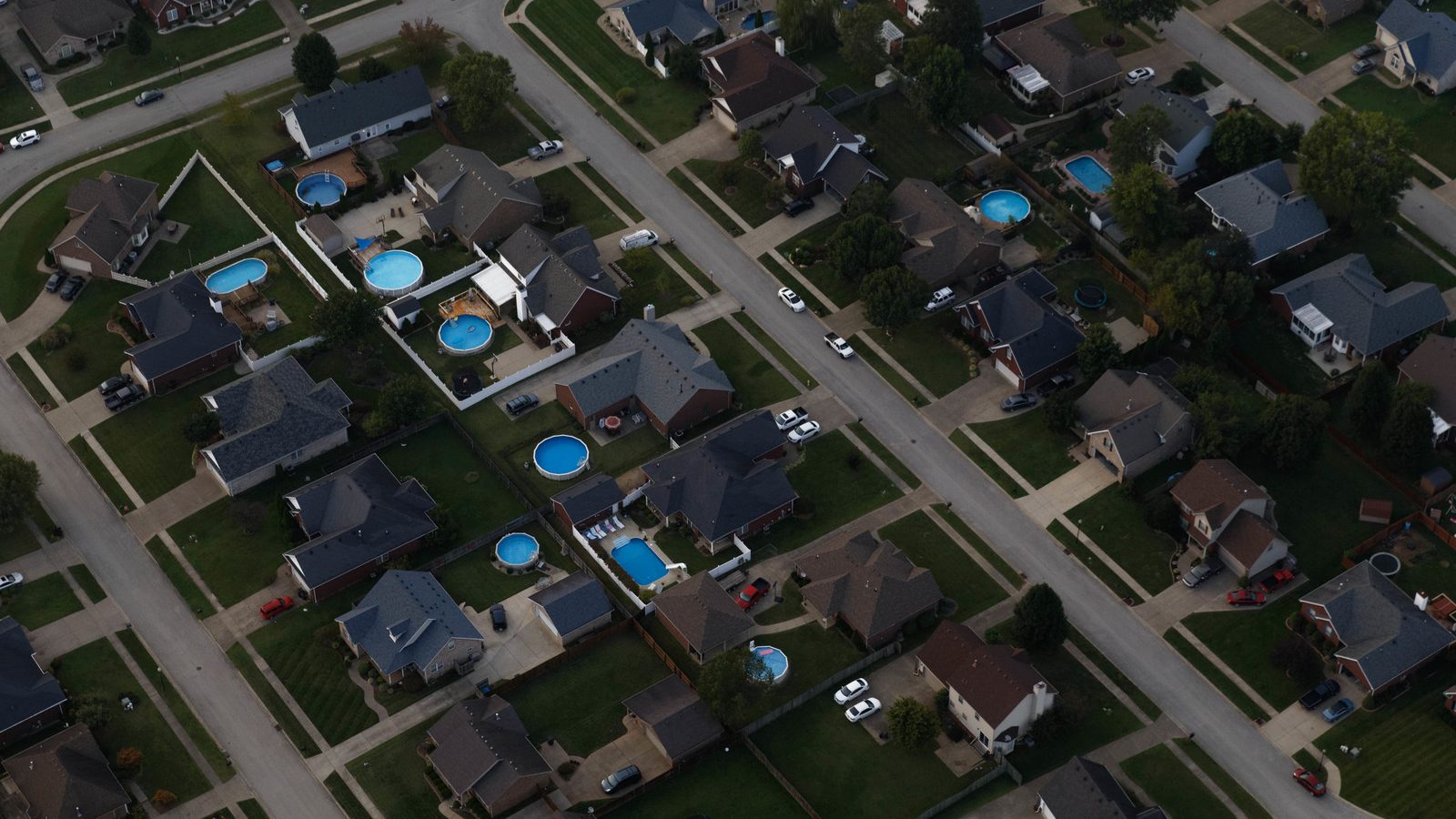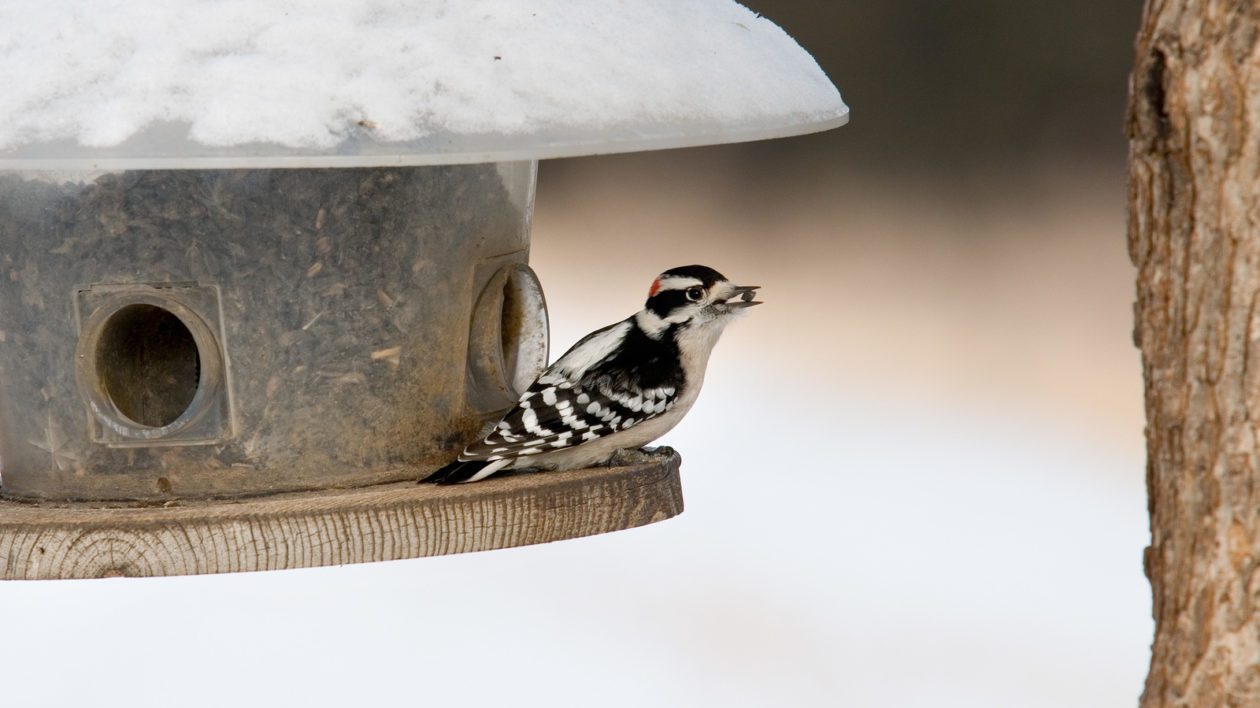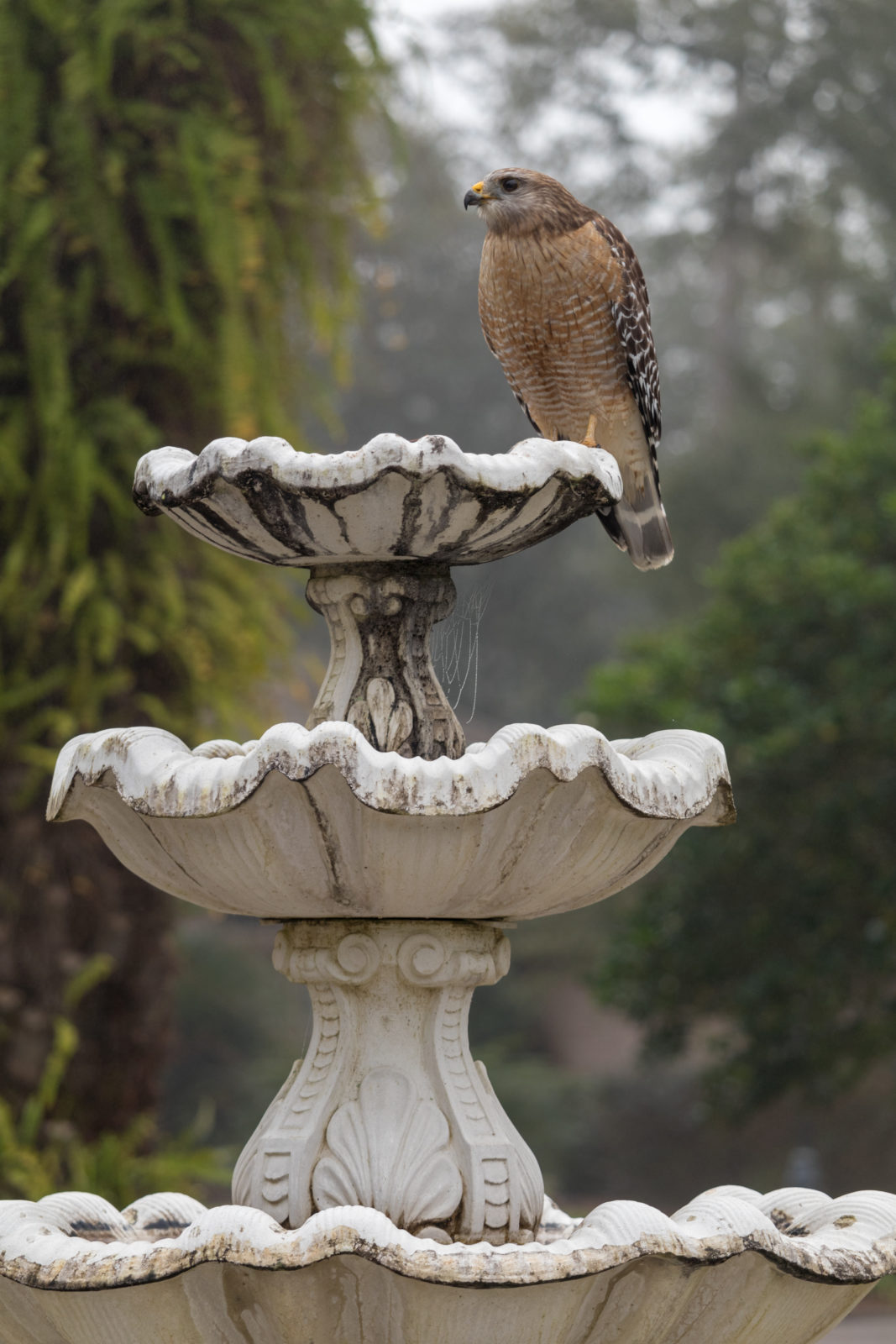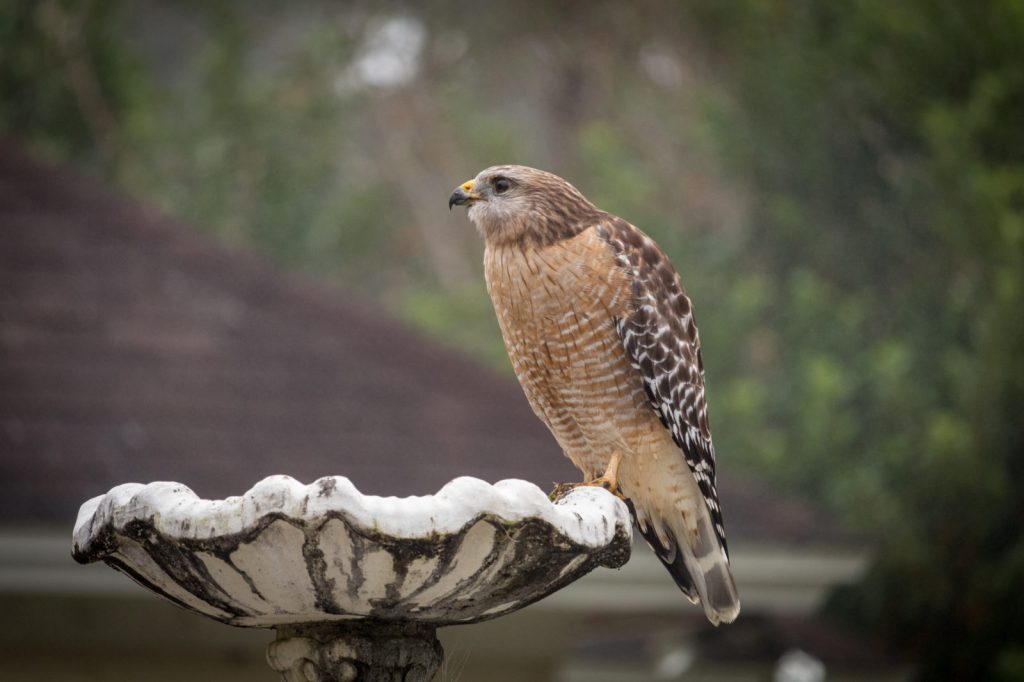Yesterday, I gazed out the window of my home office during a meeting, watching California quail and house sparrows forage beneath native sumac. Suddenly, the bush seemed to explode, with birds flushing in every direction.
A second later, a Cooper’s hawk deftly landed underneath the shrubbery. It began hopping around attempting to snag one of the remaining quail that hunkered down instead of flushing. But the hawk was just a little too late.
Over the years, I’ve noted more frequent sightings of both Cooper’s and sharp-shinned hawks around the neighborhood. You’ve probably noticed the same thing. Across the United States, these two hawk species – both similar looking and in the genus Accipiter – have increasingly colonized urban areas.
A new paper in the Proceedings of the Royal Society B sought to “identify factors that determine the occupancy, colonization and persistence of Accipiter hawks in a major metropolitan area.” In the course of their study, the researchers from the University of Wisconsin-Madison and Cornell Lab of Ornithology found that in the 1990s Accipiter hawks occupied 26 percent of sites around Chicago. After two decades, they occupied close to 67 percent of sites.
It’s a trend reported (often via citizen science) around the country. And a big part of it is the bird feeder in your backyard.
The Return of Raptors
By the mid-20th century, many raptor species, including Cooper’s and sharp-shinned hawks, had declined precipitously. Direct persecution and pesticides had taken a heavy toll. Decades of protection have caused populations to rebound, leading raptors including accipiters to reclaim habitat.
But as the birds spread, they found a new world: one of growing cities. One might initially conclude that predators would not find this new world to their liking, as it was covered in concrete and buildings instead of forests. And that’s certainly true for many wildlife species.

But, as the researchers note in their recent paper, cities present a mix of habitats, including backyards, parks and golf courses with plenty of space. These “novel ecosystems” provide opportunity for cover and also, often, for ample food supplies.
The researchers documented the spread of the two hawk species in Chicago via observation through remote sensing data and Project FeederWatch, a citizen science initiative that has conservationists record sightings throughout the winter.
Initially, the hawks colonized areas outside the city. But they increasingly spread to more and more urbanized areas. The researchers documented usage of areas defined by what they call impervious features: roads, buildings, sidewalks. The more impervious the area, generally, the less “green” habitat.
Initially, hawks avoided these highly developed zones. But eventually, as long as there was sufficient prey, they colonized even the downtown. Over the past two years, hawks went from the city fringes to occupying much of the metropolitan area.
The researchers hypothesized that reforestation would play a role in hawk recolonization. But it didn’t. In fact, wintering hawks preferred areas with fewer trees, perhaps to better hunt prey.

The Hawk at the Feeder
Bird feeding is a hugely popular urban pastime. More than 40 percent of U.S. households feed their backyard birds.
That creates an abundance of birds, concentrated in specific, predictable areas. A predator’s bonanza.
The researchers found that the predator’s persistence in urban areas was most influenced by abundant prey. Based on citizen science and other research across the country, hawks have taken advantage of the bounty of bird feeders across the country.
Cities are rapidly changing. The novel ecosystems they create are also highly dynamic and, often, poorly understood. Songbirds, like northern cardinals, may even expand their range due to feeders. Then predators recolonize, shifting species behavior and abundance.

The researchers cite studies in England that show the recolonization of Eurasian sparrowhawks in cities caused a dramatic decline in house sparrows as well as other species commonly found at bird feeders. The sparrows had exploded in population due to the free food sources and lack of predators. When the predators returned, it caused an immediate shift in the urban ecosystem. It’s not so different, really, than what happened when wolves were reintroduced to Yellowstone and found a park with an over-population of elk.
The researchers note that similar shifts in prey abundance might be expected in Chicago and other cities. Some studies have found that urban hawks are feeding heavily on European starlings, house sparrows and pigeons – all non-native species – so they could actually reduce competition for native songbirds.
Do bird feeders change migration patterns? At least one study found that sharp-shinned hawks on the East Coast were less likely to migrate due to the abundance of bird feeders.
Research into Urban Ecosystems is Vital for the Future of Conservation
Clearly, research into urban ecosystems is vital for the future of conservation. Understanding how species interact, and how species use new habitats, can help better design parks and refuges. Perhaps endangered animals that many consider incompatible with cities actually could recolonize urban areas if given a chance. After all, 50 years ago no one considered the Cooper’s hawk to be an urban bird.
And let’s not forget a key factor in helping scientists understand urban wildlife: you. The observations you make at your bird feeder, at the city park and along a greenbelt trail help researchers understand novel ecosystems and their wild inhabitants. While your observations may seem anecdotal, when combined with millions of other observers, they add up to a significant data set.
So, yes, you really are seeing more hawks at your bird feeder. Enjoy the show this winter: the restoration of the predator-prey dynamic to the urban wild.




I’ve noticed that the behavior of Cooper’s Hawks and Red Tailed Hawks in the Saint Louis city and suburbs have converged. All of the old general studies give the general overview that the Red Tailed Hawk is primarily a predator of smaller mammals while the Cooper’s Hawk is primarily a predator of smaller birds. Of course this distinction was never recorded as an absolute. Over the last forty five years I have observed about a thousand instances where-in Red Tailed Hawks had killed small to medium sized birds, or where Cooper’s Hawks had killed mammals. The extremely abundant adult squirels and cotton-tailled rabits in Saint Louis city and suburbs are both a fierce and tough kill for Cooper’s Hawks. Yet I have seen many such kills over the years. In the case of the squirels, I’m pretty sure both male and female Cooper’s Hawks make the kills equally well. Because our rabbits are quite variable in their sizes, I can’t be sure the hawks are male or female. It’s my impression that the Cooper’s Hawks are more likely to kill rabbits than the Red Tailed Hawks. During the past forty five years in Saint Louis, the American Kestrels have gone from being the only abundant raptor to being locally extinct in most areas.
I’m really pleased that today’s ecologists and conservationists are actively studying and thinking about our cities and sub-urbs.
Bye Bye Birdie……or, can you say EXTINCTION? My granddaughter 15+ years ago as very young child loved watching chickadees, scores of them, as they flew about the feeders in her peach tree…….unfortunately the chickadee has not the trait of staying alive, they themselves became feeding stations for the predators on their way toward inflicting the mass extinctions to come.
I saw them being slaughtered one day as one hawk kept picking them off, as popcorn… scores of them….. we rushed to take the feeders down as that hawk brushed past my face to snag another one… the bluejay and the cardinal still lives, but vastly reduced in numbers while the eggs of these become feed for the next generation of hawks come spring..
Recognizing that continuing feeder attraction would crush lives of her beloved chickadees my granddaughter refused to replace feeders on her peach tree from that time forward, she refused to compromise what she loved…..five years old!
Looking back I remember being furious at how audubon along with other wild bird fanatics stocked the entire USA with predators the entire late 20th century………what gave THEM the right!
I have been an urban bird feeder. I live in So Cal. I noticed in the last couple of years more “sharp shinned hawks” have been attacking our sparrows in our trees, they also go for the turtle doves which I have seen multiply profusely thanks to my feeding them. Initially I chased the hawks away. They reminded of bully birds. But after reading this hugely informative add here I now realize that the birds I have been feeding are a huge part of others food chain. My question is: Do sharp shinned haws feed exclusively on other birds? – I have also theorized myself that the world is losing so many fruit trees, either through fires or people just not opting for them. Birds down in Mexico depend highly on all types of natural fruit trees which are also shrinking. I think we need to encourage humanity to plant more fruit trees and discourage FUMIGATION of highly toxic poisons.
why are the hawks so cool. why do they sit on the pols.
I have a tray feeder in my back yard which attracts many types of birds, but I always have lots of doves. In the winter the Cooper’s and Sharp Shinned Hawks like to post nearby to grab the slow moving doves! But just last week, a burst of feathers caught my eye and what looked like a Red Tailed Hawk grabbed a dove. I later saw him perched on the iron fence. I live near a golf course in several Woodcreek areas so we see Red Tailed Hawk’s all the time, but not in my backyard usually! I love seeing these beautiful birds, and I don’t begrudge them dinner at my feeder. The doves are really a nuisance anyway, they hog all the birdseed and make a mess. What is especially entertaining is to watch the Blue Jays mimicking hawk calls to clear the feeder for themselves, pretty clever little guys .
This morning I looked out my back yard window and saw a gorgeous Hawk sitting on my fountain. I have never seen one that close. What a thrill to see it. He was driving the other birds crazy, they were all trying to attack him. I looked the bird up and I believe it was a Cooper’s Hawk. What a Beautiful Bird. I live in Thousand Oaks, California
I live in Prince George’s County, Maryland. Within the span of one week I witnessed a red-shouldered hawk perched atop a tall oak in my yard, scanning for prey. Then he swooped down and within 40 minutes had caught and eaten two medium-sized snakes. Later in the week a red-tailed hawk did the same with a mourning dove.
I saw a hawk on a roof across the alley from my house. This is the first time i’ve seen one in the city. I also saw one by where I work which is about a half an hour away from my house. It was in a tree across the street and it was up in a tree, eating what looked like a pigeon. I was amazing to see. I live in Chicago.
I’m on Long Island and I can absolutely verify (by subjective observation) the increase both in sharp-shinned and Cooper’s hawks in my neighborhood.
This article certainly bears out what I have been witnessing for the last couple of years in my city (Albany, GA). I have photographed two Hawks within as many years feeding on their bird kill by my feeder and one other young Red Wing feeding on a squirrel on my front lawn a couple of years ago. What is amazing is that they continue to feed even when approached closely. Great if you are photographing them but coupled with ambivalent feelings for the birds (and squirrels) I feed. It is common to see four or more hawks circling our subdivision during the day.
We have a high window in our “mid-century modern’ house in Davis, CA. A hawk, I assume a coopers, has hit that window, or appeared to chase a bird into it, at least twice while I watched. One time it picked up the stunned bird and left; today the dove survived and they both flew off. Is it possible that the hawk is using the window? It is now plastered with decals… I have seen what I assume to be this resident hawk eat prey on the same tree branch – once a rat, once a dove. Takes at least 20 minutes.
In the past, I was literally shocked to see a raptor in my small backyard chasing a smallish songbird. The speed of flight across the yard, just 100 feet to a large holly bush, saw both prey and hawk disappear within. I wondered about the demise of the small bird and how such a large hawk could maneuver inside such a dense holly bush without injury? But, the speed of flight, the high rate of acceleration, were what amazed me that day…
I love the exciting and colorful hawks as much as anyone but the thought of attracting them with our feeders to kill our beloved songbirds, woodpeckers, wrens, juncos, chickadees, cardinals, and tufted titmice seems more than a little gruesome. I have already witnessed some bloody attacks, which I won’t describe here. But I know that is all part of nature, “red in tooth and claw”.
The article was marginally interesting until the part about how these raptors go after pigeons, i.e., flying rats. That caught my attention because I hate pigeons. To me and many urbanites, the value of hawks –like that of coyotes and feral cats–also lies in their appetite for other vermin of city life, like mice and rats.
This is important because, here in Chicago, the city has been discouraging residents from having bird feeders for the simple reason that whatever chaff ends up on the ground draws and sustains the rat and mouse population. I’ve seen it. It’s disgusting.
So rather than how hawks like to ambush sparrows and other songbirds, I’d be much more interested in your thoughts on how hawk re-colonization of urban areas could better be harnessed in keeping our streets and alleys–and homes–free of unwanted critters. Any research being done on that?
Yes, for the last several years Cooper’s Hawks have come hunting/perching in view of bird feeders on back porch near the lake and a sanctuary in big city park.